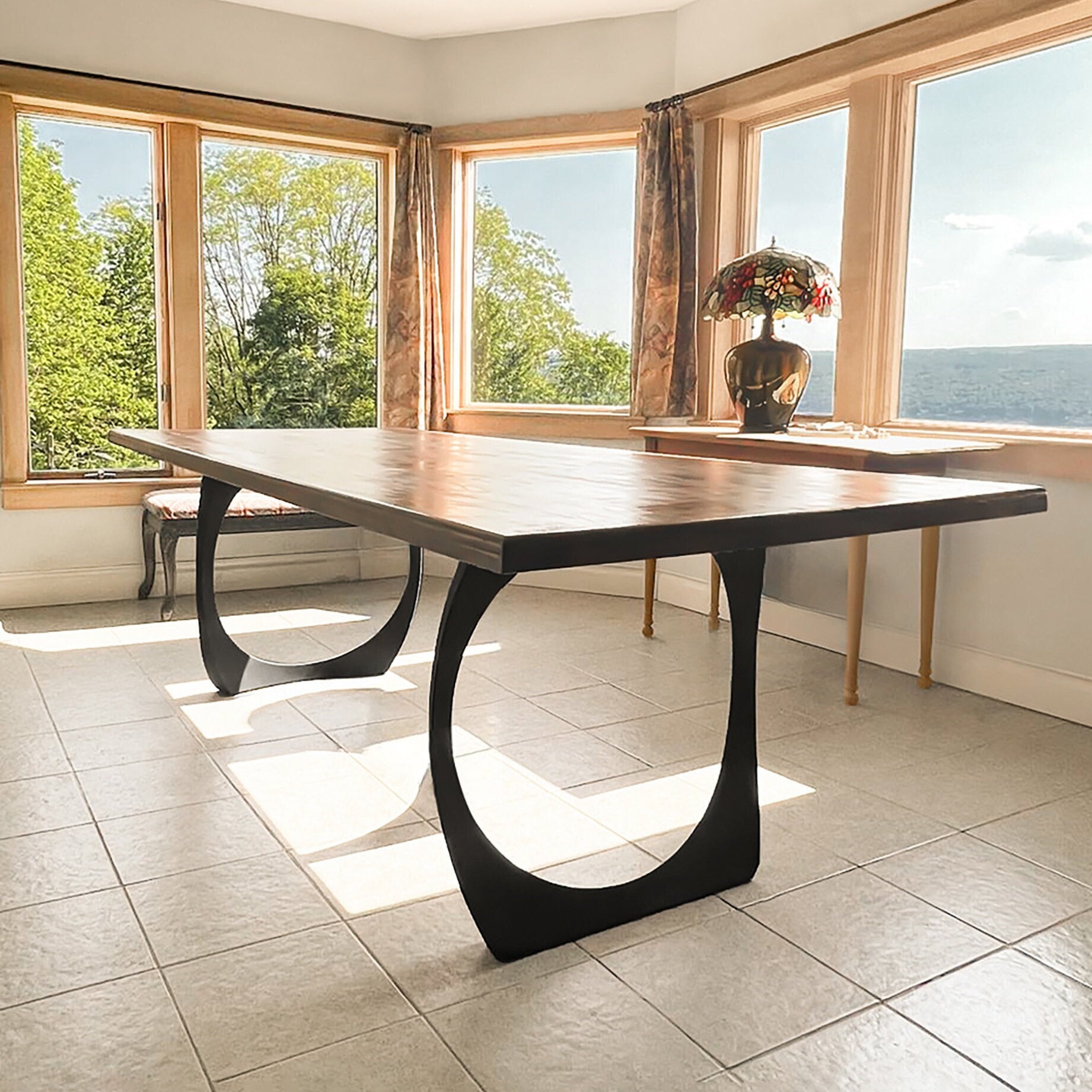The Ultimate Guide to Choose Long Lasting Dining Room Table Legs
The Ultimate Guide to Choose Long Lasting Dining Room Table Legs
Blog Article
Choosing the Perfect Table: What Styles Work Best for Your Home?
Choosing the excellent eating table for your home can be a nuanced process that balances looks and functionality. To navigate these options properly and locate a table that truly matches your home, take into consideration the complying with elements in information.
Analyzing Your Space
Assessing the dimensions and layout of your dining area is a critical very first step in selecting the ideal table. Begin by measuring the size and width of the room, accounting for doorways, windows, and other architectural features that can affect table positioning. This makes certain that your table not just fits yet additionally permits comfy motion around it.
Take into consideration the variety of people you usually amuse. A table must fit your family's everyday demands while supplying enough adaptability for periodic guests. As a guideline of thumb, assign at least 24 inches of table width per individual to ensure a comfortable dining experience.
It's also important to keep ideal clearance around the table. Preferably, there ought to be at the very least 36 inches between the table edge and wall surfaces or various other furniture, enabling easy accessibility and activity. For areas where chairs with arms or additional storage space systems like buffets are included, increasing this clearance to 48 inches is advisable.
Lights and environment play significant duties also. Make certain that your table aligns with existing lights fixtures or strategy for appropriate illumination solutions. This thorough spatial evaluation guarantees that your table not only fits literally yet likewise harmonizes with your space's overall capability and aesthetic.
Popular Table Styles

Traditional table usually include elaborate details, curved legs, and rich timber surfaces, stimulating a feeling of classic sophistication. They are best for homes with traditional design or those looking to include a touch of refinement to their eating area.
Modern dining tables focus on simpleness and clean lines, typically incorporating products like glass and steel. These tables are optimal for contemporary rooms, supplying a smooth and uncluttered appearance that matches minimal style viewpoints.
Rustic dining tables, on the other hand, emphasize all-natural materials and a handcrafted look - dining room table legs. They frequently include recovered wood and a distressed coating, producing a warm and welcoming atmosphere. These tables function well in farmhouse-style homes or those seeking a comfy, organic feeling
Industrial dining tables incorporate raw materials such as metal and timber, frequently showcasing a practical aesthetic. This design is well-suited for loft spaces or urban rooms, adding a touch of sturdy charm and longevity to the dining experience.
Each design offers distinctive benefits, making it crucial to select one that aligns with your home's total layout and your personal choices.
Material Options
When picking a dining table, the selection of material plays an essential function in determining both the table's appearances and functionality. Timber, steel, glass, and composite materials each offer special advantages and obstacles, making it crucial to align the material with your home's decoration and way of living needs.
Wood is an ageless and functional alternative, available in ranges such as oak, walnut, and mahogany. Understood for its durability and warmth, wood matches both typical and modern interiors. Nonetheless, it needs routine upkeep to stop scratches and warping.
Metal tables, commonly crafted from stainless-steel, light weight aluminum, or functioned iron, are commended for their modern-day allure and toughness. They are specifically matched for commercial or minimal setups however can be susceptible to damages and might feel cold to the touch.
Glass dining tables bring an air of elegance and openness, ideal for smaller areas as they create an illusion of more space. While simple to clean, glass can be vulnerable to smudges and requires careful handling to avoid chips and splits.
Composite materials, such as MDF and plywood, deal affordable and customizable solutions, though they might do not have the durability of natural materials. Picking the best material go to the website guarantees your eating table is both a practical asset and an aesthetic joy.
Sizes And Shape Factors To Consider
After identifying the appropriate material for your eating table, the next factor to consider is selecting the ideal shape and size to fit your space. On the other hand, rounded tables promote a feeling of intimacy and are exceptional for smaller sized dining locations, motivating discussion by getting rid of edges and making everyone really feel just as included.
As a policy of thumb, allot at the very least 24 inches of table size per individual to ensure comfortable dining. Additionally, consider the table's clearance space: there ought to be at least 36 inches between the table side and the wall surfaces or other furnishings. Expanding tables offer flexibility if you regularly organize bigger events, supplying added seating when needed without inhabiting added area daily.
Matching Your Decoration
Selecting an eating table that balances have a peek here with your existing design is pivotal in developing a natural and welcoming room. A sleek, minimal table with tidy lines is optimal for a contemporary home, while a vintage, luxuriant table matches a my company more traditional setting.
If your design features cozy tones and all-natural products, take into consideration a wooden table to boost the natural feel. On the other hand, a glass or metal table might be much more proper in a room dominated by cool colors and commercial components.
A rough-hewn, reclaimed timber table can add personality to a rustic space, while a sleek marble surface can boost a luxurious dining area. A well-matched dining table not just boosts visual appeal however likewise enriches the general dining experience.

Conclusion
Choosing the suitable dining table necessitates cautious consideration of area, design, products, form, and dimension. Standard tables complement traditional interiors with rich wood finishes, while modern tables match modern setups with glass and metal.
Report this page